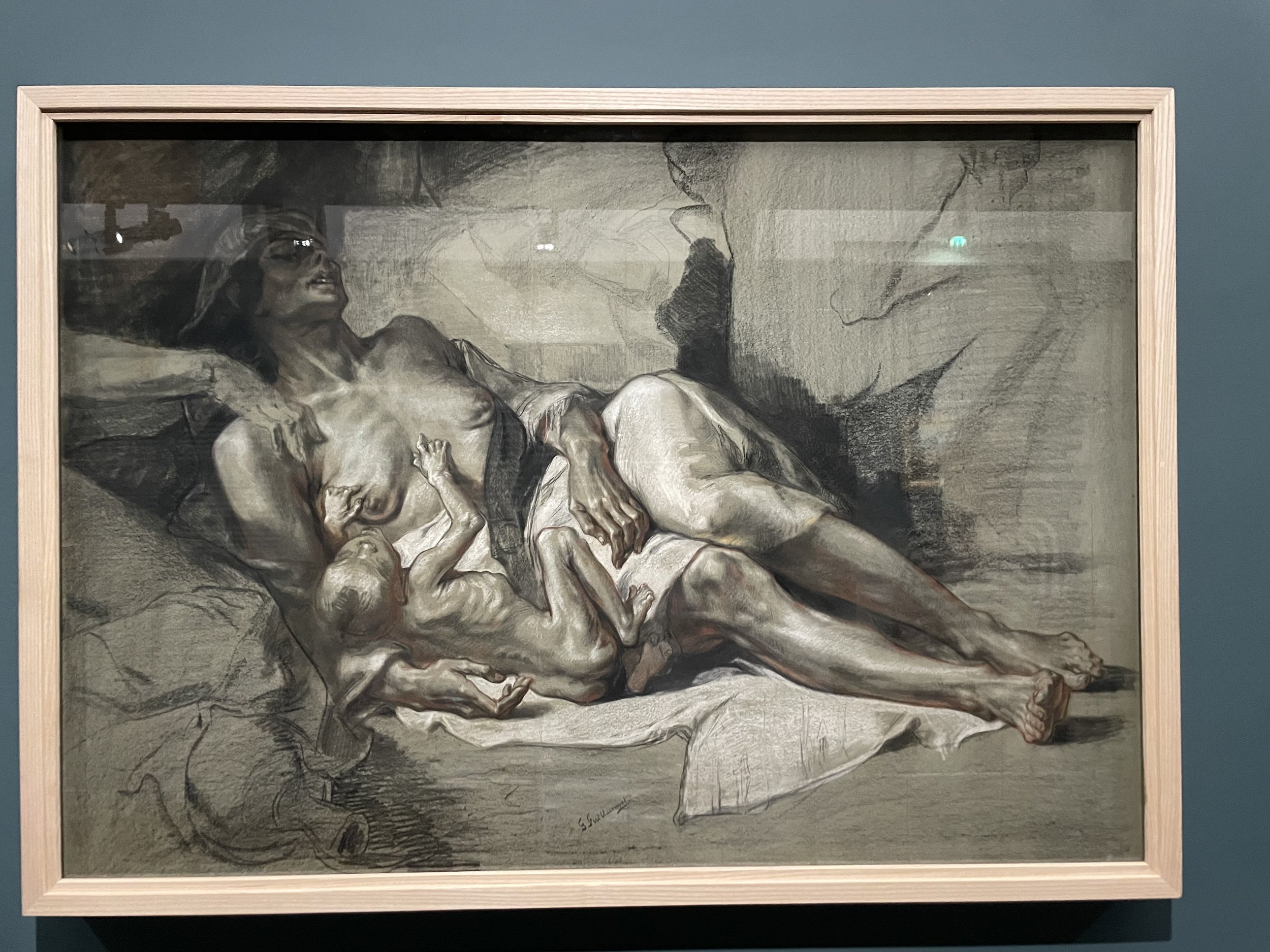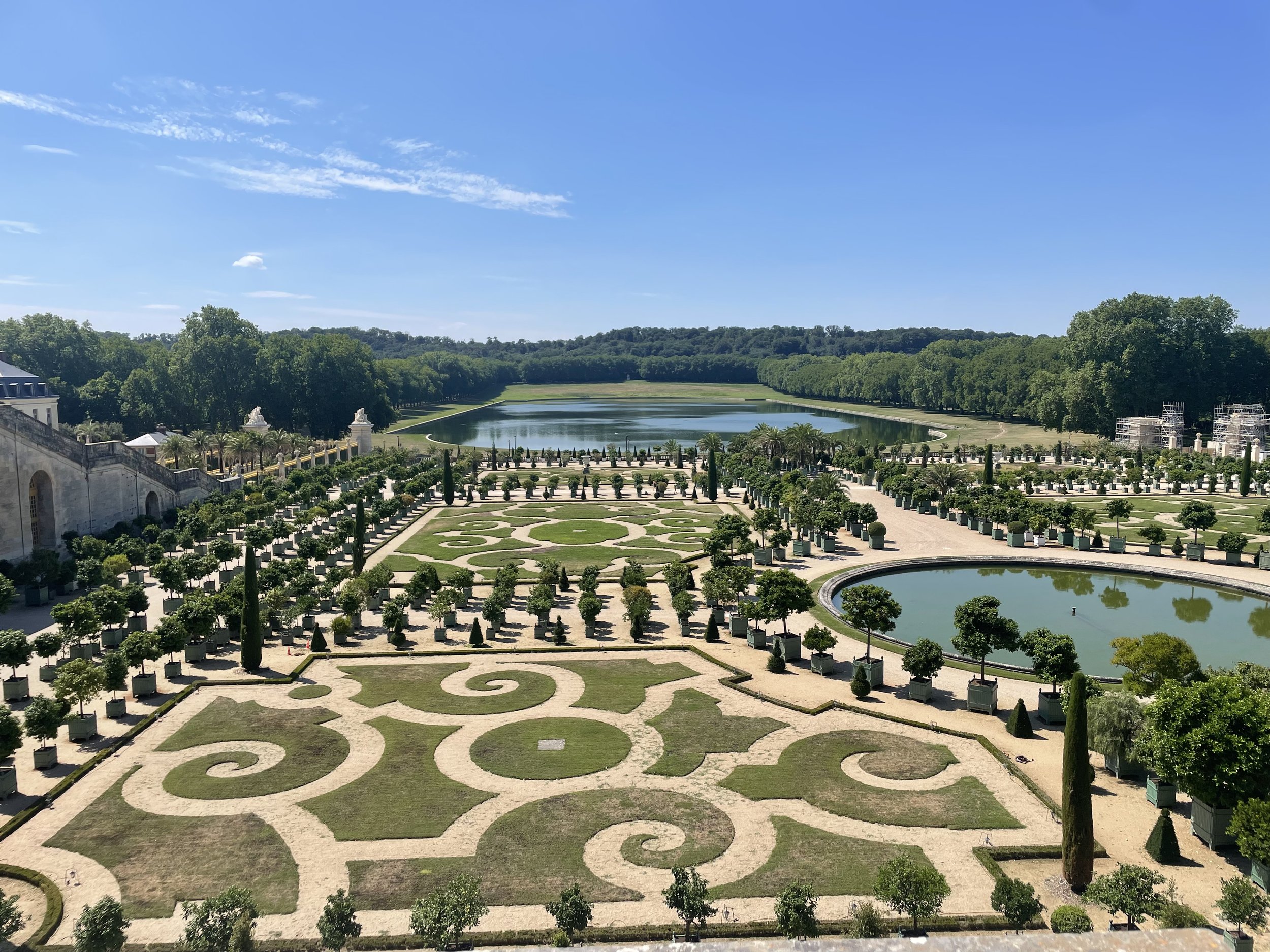As my time as an official bookpacker draws to a close, I have begun to look back at this past month and ask myself, what does it mean to bookpack? If you asked me this at the beginning of the class, I simply would have answered “you read the books and then visit the places discussed.” Since this bare-bones definition, I have developed a much deeper understanding of what it means to be a bookpacker rather than just a reader or a traveler. As both an inexperienced consumer of literature and an international traveler, this past month has had a tangible effect on the way I approach reading, the way I examine the history, and the way I appreciate the unknown.
Walking home past the Eiffel Tower!
Before starting this class, what I considered to be my biggest obstacle was finding the drive, or even the desire, to read such lengthy novels. Now for those of you reading this, you’re probably asking yourself, why on Earth would you take a class based on classic literature if you can’t stand reading? If you were to ask me this question two months ago, perhaps I would’ve answered “I don’t know” as the challenge of reading a 1300+ page book seemed impossible. The process of reading Les Miserables over two months was certainly a challenge at times, however, the story kept me engaged all the while. Looking back, while I can’t say I would have ever picked up this book out of my own volition before this class, what I now have is a much better relationship with classic literature and reading in general. In my application to join this class, I wrote that “I find myself impatient with readings that do not lay out their message clearly, so I can internalize their message and directly translate into my other works.” While some of this remains true, the element of bookpacking made me feel as if I was reading about something tangible. I feel as if even without the bookpacking element, I can enjoy reading even if the deeper meaning is buried behind imagery or a couple of hundred pages. Visiting places such as Temple Bar, the site of the Corinth Barricade, and even the less than glamorous Paris sewers opened up an entirely new perspective on reading I was never privy to. From this excitement about my new attitude towards reading, I purchased The Hunchback of Notre Dame from Shakespeare & Co., my first book purchase by choice in well over ten years! This new attitude towards reading has been a welcome change in the course of this class and something I suspect will follow me for years to come.
The second aspect of this experience that I am grateful to come away with is a new perspective to examine history. As a student of history, we are taught to constantly look for new ways to study history; be it social, political, or cultural. While I have taken classes that have focused on each of these perspectives to different degrees, there is a noticeable lack of literary works within history. We read firsthand accounts, historical nonfiction novels, and documentaries; but very rarely do we take an entire piece of literature, like our novels, and use it to understand history. Both novels revolve around the revolutionary nature of France during the 18th and 19th centuries, a time I was relatively familiar with from past classes. What differed from those classes to this class is how we looked at small facets of the revolution and their tactics, such as the barricades that once consumed Paris set up by activists or tearing up the paving stones to protest. It is these small acts of defiance that build up to revolution and, while not always successful in the short term, help reveal the attitudes of a nation as we learned. France’s revolutionary period was much more than the Women’s March on Versailles and the execution of Louis XVI and Marie Antoinette. This period was characterized by episodes such as the Reign of Terror, which saw men such as Charles Darnay wrongly accused by extremist revolutionaries like Madame Defarge. Stories like that of Darnay are what transpired during this time and are precisely what is lost by not viewing history through this literary perspective. Classic literature allows us to read the intricate, elaborate stories of these people created by wonderfully talented authors, and understand the time for how it was to the ordinary person. It creates a sense of imagery that we so desperately lack reading a nonfiction piece on the French Revolution. In a sense, we are more immersed in history than ever when reading a work of fiction in such a way that we can almost interact with the past itself. Visiting these sites only adds to the experience of seeing history firsthand, as you can now physically imagine where great acts of sacrifice took place as I discussed in the previous blog post, "Death in the City of Lights." Conversely, you can see the little acts of culture and day-to-day living that have been influenced by the past as I discussed in my “Unbothered” blog post. In a sense, bookpacking allows you to flâneur through history yourself and recognize the minutiae of the past that amount to the reality we now exist in. As a history major, I look forward to carrying this perspective with me and even taking more classes based around classic literature and maybe even taking the opportunity to bookpack myself for these classes!
The last aspect of this past month that is perhaps the most memorable is the experience of traveling internationally with purpose. Before this class, neither I nor my family was fortunate enough to have left the United States and visit cultures outside our own. For many years, it was a dream for one of us to finally make it out of our comfort zone and see the world beyond our comfortable corner of Southern California. Finally getting the opportunity to leave the US and experience the differences in American versus British and French culture that make traveling worthwhile. Visiting London was, surprisingly, an easy transition from the United States since it felt so similar, from language to communicate to media. Despite the similarities, my experience in London was the stereotypical British, tea-drinking, fish and chips dream I had always imagined. Perhaps the best part was the people we encountered who welcomed us with open arms, told us the best spots in town, and bonded with us over our traveler’s excitement. If I had to describe London in one word, I would ultimately have to say: homey. Despite their relative proximity, London and Paris are two cities that feel worlds apart from the foundations of their society. Exploring Paris was perhaps the first true instance of culture shock I had ever experienced; from the arguments in the middle of Parisian traffic to the boulangeries on every corner. Paris is a world of its own in that it thrives on individuality and a deep-seated passion for life, yet the city itself feels so uniform that you wouldn’t be amiss to mistake the 6th arrondissement for the 16th. As you flâneur through the city, you find yourself in amazement at every alley, walkway, and storefront even though they may look the same as the one you passed just a block away. This sort of charm is what kept Paris exciting and made three weeks disappear in the blink of an eye. From this whole experience, the moments I will cherish the most were my moments along the Seine, whether, with the class or alone, there is a certain “je ne sais quoi” about these strolls.
Class memories at Versailles!
As this experience draws to a close, I can say that I truly look back on this past month with nothing but deep appreciation. Appreciation for the wonderful locals of London and Paris. Appreciation for the world-famous sights and sounds of these magnificent cities. Appreciation for a new perspective on learning. And an appreciation for the close-knit group of friends we bookpackers have formed in just a mere few weeks. Through all of it, having friends to share special moments with made the experience all the better. From strolls across the Thames at night, to watching the Eiffel Tower shimmer at night, to enjoying impromptu meals with one another; all these are memories I hold near and dear to my heart. It is because of these incredible memories, great friends, and new experiences that I find it hard to say goodbye to Paris, goodbye to my new friends, and goodbye to the class that permanently expanded my worldview. While it may be the cheesiest way to end a study abroad experience, I can think of no better way to end my time as a bookpacker with an overused quote:
“Don’t cry because it’s over, smile because it happened.”














































































